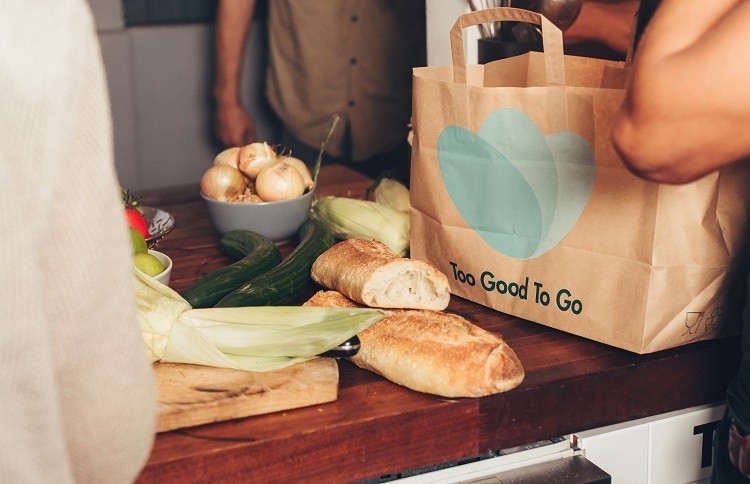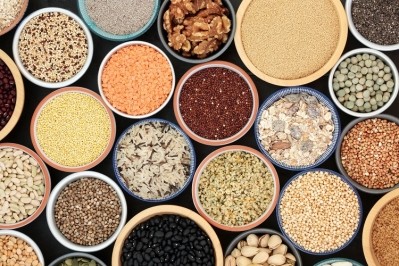Too Good To Go turns food waste into business: ‘It really is a win-win-win concept’

This month, Too Good To Go will celebrate a significant milestone: the food waste app will have saved 20m meals since it launched in 2016.
The platform provides a marketplace that connects businesses which have surplus food with consumers looking to ‘rescue’ these meals. Rather than be discarded at the end of the day, these foods can be purchased at a reduced retail price, and collected by consumers in-store at a pre-set time.
As CEO and co-founder Mette Lykke describes it, Too Good To Go “creates a marketplace for what would normally end up in the bin”.
Food waste: An entrepreneurial point of view
When Lykke launched Too Good To Go four years ago in Denmark, the idea was to tackle food waste through an entrepreneurial lens, she told delegates at the World Food Summit in Copenhagen last week. “An entrepreneur will identify an issue and then spend their entire [life] finding a solution and working to scale that worldwide.”
The ‘issue’ here is greater than many know. The United Nations estimates 1.3bn tonnes of food is lost or wasted each year, which equates to roughly one-third of the food produced for human consumption.
Lykke was dumbfounded when she first heard these figures. “Of all the stupid things we do, this just seemed really [foolish], because no one benefits. But when you dig into it and understand the complexity of this issue, it starts making more sense.”
Food waste occurs along the entire, often very long, value chain, from food production, through handling and storage, processing and packaging, distribution and market, to consumption. Too Good To Go is concerned with the retail-focused ‘distribution and market’ link in the chain, which accounts for around 10% of total food waste in developed countries.
In doing so, the start-up considers food waste from three perspectives: from an environmental standpoint, food waste contributes about 8% of the total greenhouse gas emissions; from a social perspective, more than one billion people go to bed hungry every night; and considering the economic aspect, total food waste is worth the same GDP as Denmark, Norway, and Sweden combined, annually.
“For us, the good news is that it is also an opportunity, a real business opportunity,” explained the entrepreneur. “And I think what is powerful in how we think about solving food waste, is that we [are
doing it] on market terms.”
Win-win-win
That the planet wins when food waste is reduced is well acknowledged. And looking at the numbers, Too Good To Go has saved more than 50m kilograms of CO₂ equivalent in its relatively short time on the market. What has also worked well in the start-up’s concept is how the other two ‘wins’ – consumers and retailers – have embraced the platform.
“[The app] has proved to be quite popular among consumers and retailers,” said Lykke modestly. At last count, Too Good To Go had more than 20m consumers and 25,000 different stores registered across 12 countries. “We think this is because it is a win-win-win concept. We are taking an issue that everyone loves and turning it into a win for everyone.”
For retailers, Too Good To Go boosts their corporate social responsibility (CSR) image, she explained. Further, “most people [in the food retail business] who dedicate their lives to food don’t enjoy throwing it out. They actually really hate it. We let them [save food] in a really public way,” Lykke continued, suggesting that being associated with the app can boost brands’ image among consumers.
And of course, there is the financial aspect. “There is decent revenue for stores to be made in this way. And because the food would have been thrown away, all the revenue from Too Good To Go flows through to the bottom line. In a small business…that can matter.”
For consumers, there are also financial gains. The platform usually offers food at a 70% discount on its original retail price.
But interestingly, it is the ‘mission’ that people enjoy the most, the CEO explained. “That feeling of saving a meal from hitting the bin. It feels different from calling the local pizza guy and ordering a pizza. It is just something else, it really feels different. Consumers like feeling that they are part of a movement.”
Can Too Good To Go scale?
Like all start-ups, the primary challenge is attaining scale. Too Good To Go is ‘working on it’ – and quite successfully. In four short years, the platform has spread to 12 countries (Too Good To Go launched in Austria just last week) and plans to enter the Portuguese market next month.
Its retail partnerships are also broadening. Whereas the app began with buffet restaurants and bakeries, its primary retail category is now supermarkets. “We are starting to have scale, but obviously this is just the beginning,” said Lykke. “It takes time to get these things off the ground.”
The company currently has 350 employees across Europe, which will grow to 550 by 2020. The CEO also hinted that expansion beyond Europe’s borders was on the cards. “We can’t talk too much about that, but we think we have something that can be applied outside of Europe,” she told delegates.
Ultimately, Too Good To Go wants to be more than a successful marketplace, Lykke revealed. “Our vision is to empower everyone to take action against food waste, and what that means is that we want to be part of the movement.” This involves allocating resources to educating consumers and changing mindsets to reduce food waste at home, as well as working with businesses to improve data labelling on food products.
The start-up also has a dedicated team making food waste-focused educational materials that schools can use for free. “And we also want to get more engaged in the political agenda, to see if we can help be part of the solution there.”


























